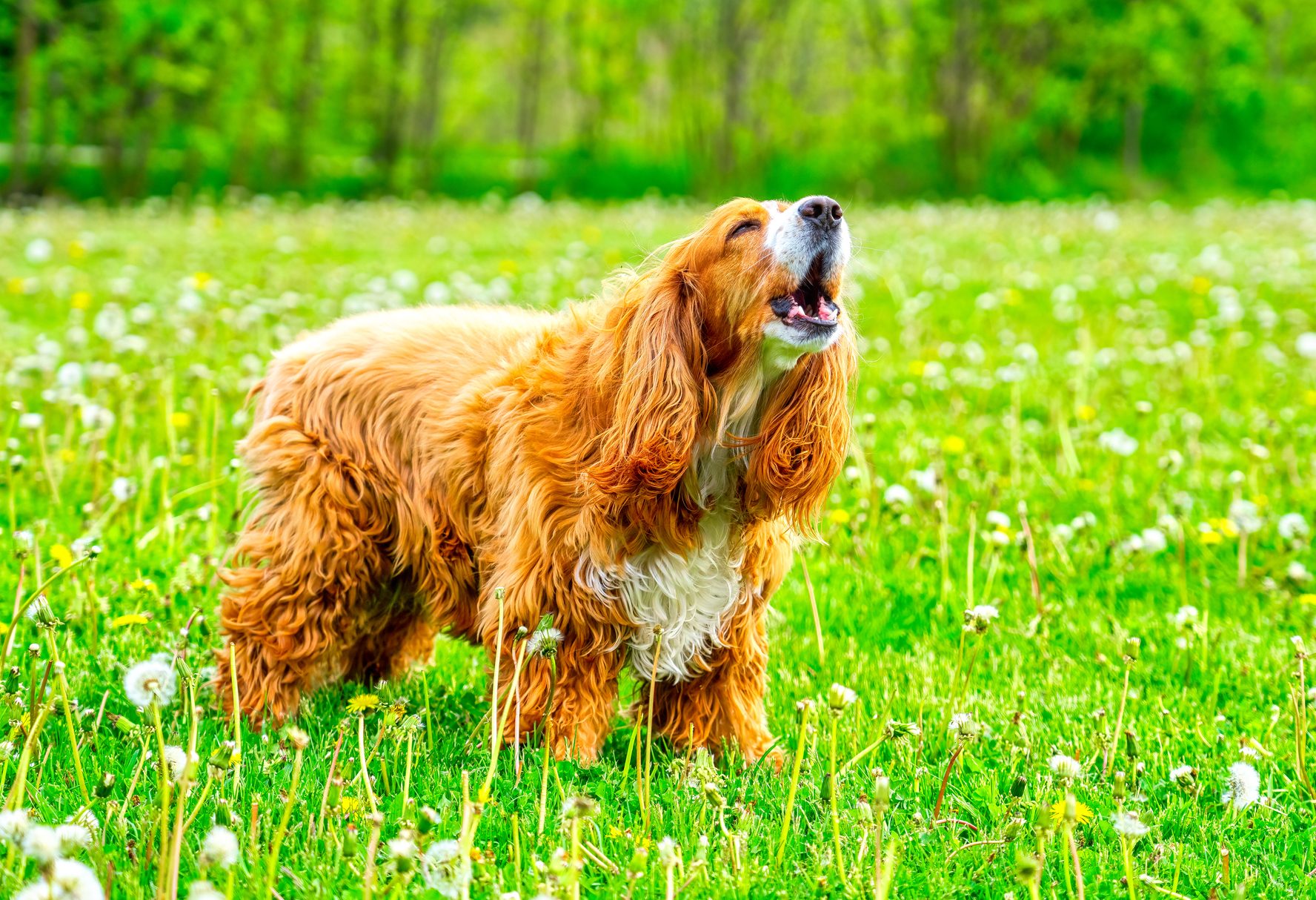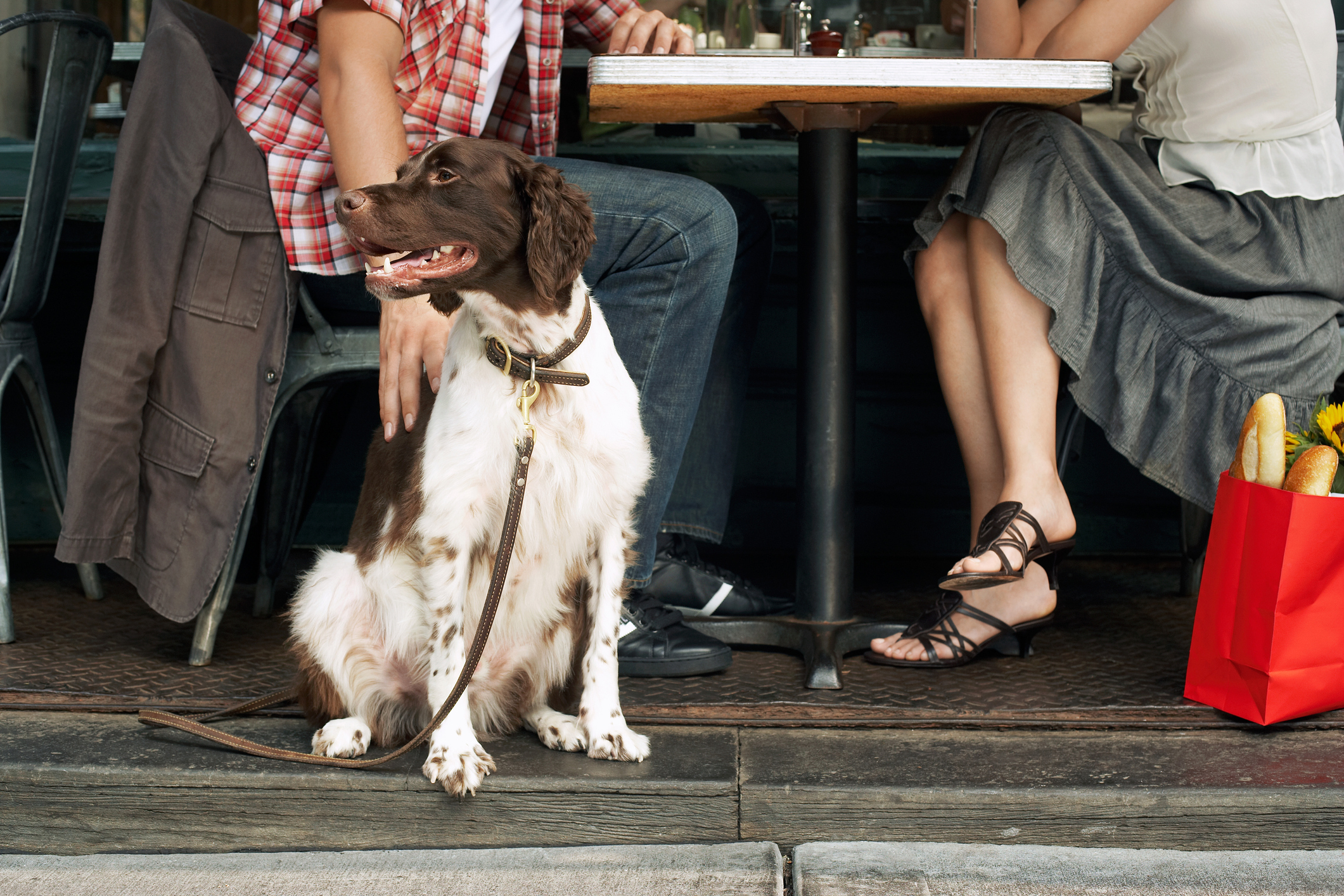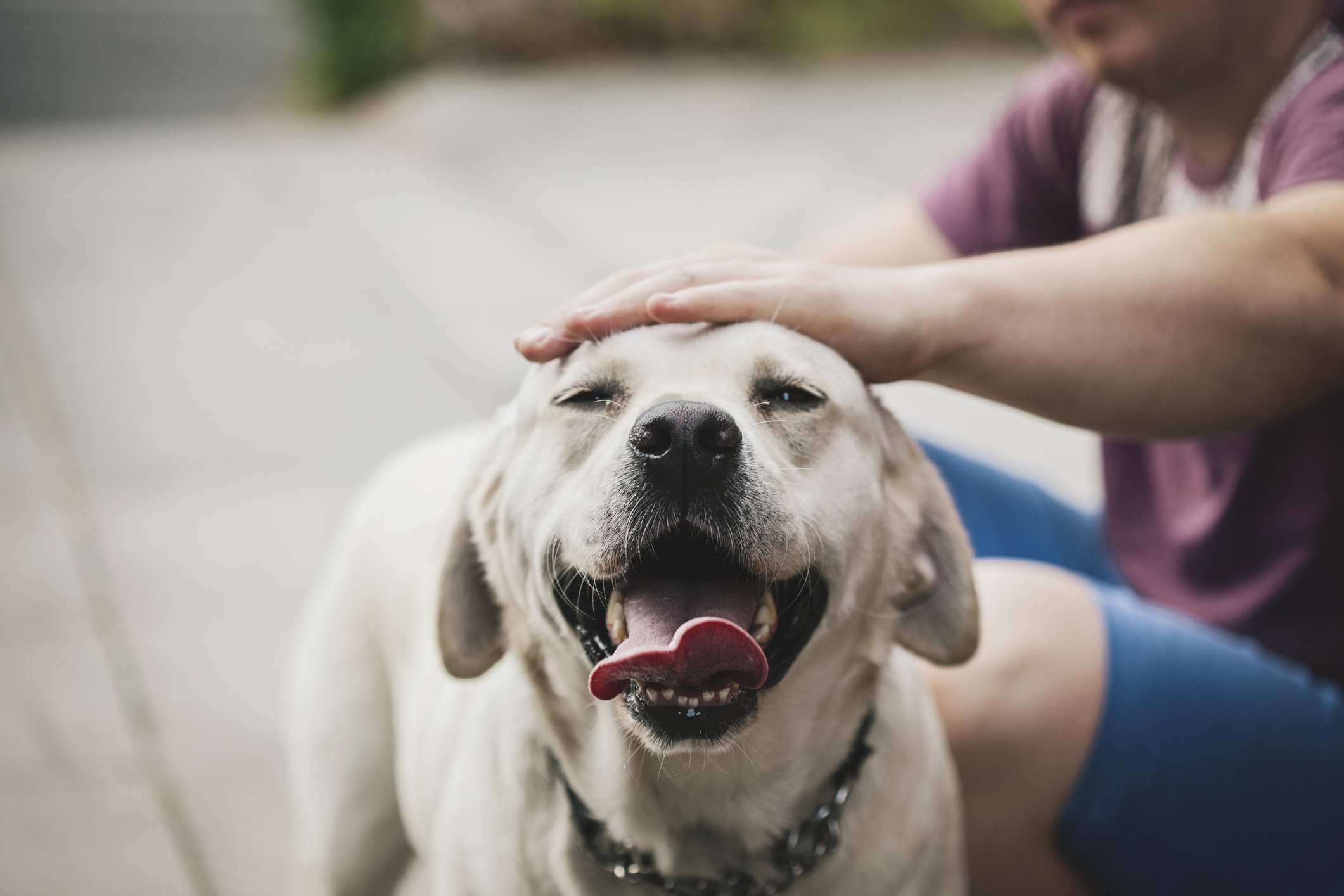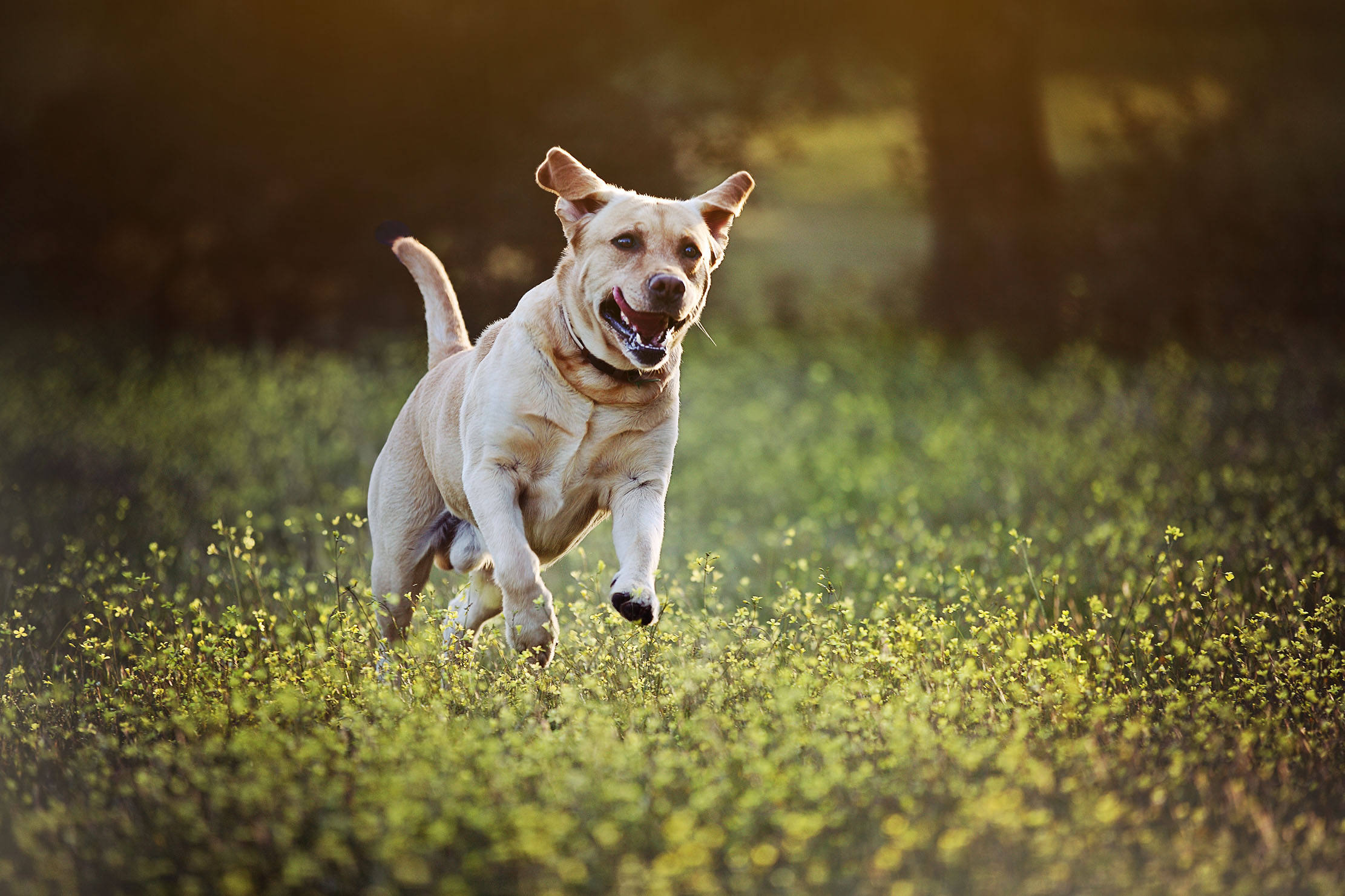How to stop your dog barking constantly, by leading trainer Ben Randall
A dog who can't stop barking can drive you, your friends and your neighbours crazy. Luckily our resident canine agony uncle, Ben Randall, has several tips for encouraging any noisy four-legged chatterboxes to zip it.


Even the quietest, most chilled and well-behaved dogs will bark from time to time as, after all, having a woof is one of their only ways of communicating. But what do you do when your trusted canine companion is very vocal in all sorts of situations in which you would really rather that they keep schtum?
This is the dilemma facing P.W., who’s written via paws-for-thought@futurenet.com to ask how she can prevent her veteran show cocker spaniel Moss from barking — something she's particularly prone to when other people are making a fuss of her:
Dear Mr Randall,I'm writing to you in desperation! I have a fantastic 11-year-old show cocker spaniel, who should have retired when she was 11, but because she thinks and acts like a puppy, has been allowed to carry on working until the age of 13.She was prone to barking a lot when she first came to me nine years ago, but now her barking is ridiculous, as she barks wherever we go. She barks for attention, barks when it stops and even barks at animals on television. And, when we go on my frequent hospital visits or to other places, such as restaurants, her barking is insane.I've tried ignoring it. I've tried stopping when she barks, then carrying on when she stops. I have also tried treats. However, the problem is she’s so super cute that, even though her lead tells people not to distract her, fellow diners in restaurants tend to ignore it — even when I say not to touch her — and so, when they stop stroking or talking to her, she barks for more. Please can you help me? — P.W. and Moss
Just as with us humans, a dog’s habits can become so ingrained that they are often hard to stop. However, with the right training and the correct mindset, undesirable behaviours like these can definitely be improved to enable you to enjoy your dog’s company far more.
From your letter, P.W., it sounds as though your dog is seeking attention and behaving like an over excited and spoiled child, who makes continual demands, such as: ‘I want, I want, give to me!’
I’ve been perfecting my BG (Beggarbush) foundation methods for nearly 20 years and understand that even experienced dog owners come up against issues that they are not sure how to handle. You can learn more via @beggarbush on Instagram and my dog-training app (this link will let you get a free trial) or ask me your own question by emailing paws-for-thought@futurenet.com.
By the sounds of it, this behaviour is a real issue and most definitely not making your various trips out and about much fun at all. As I've said, with a little time, patience and careful retraining, I feel sure that you will be able to stop Moss’s increasingly irritating barking habit in no time.

Ben’s top five tips for discouraging a dog from barking for attention:
1. Stop rewarding Moss with treats for barking
First off, I would like you to stop trying to bribe Moss to stop barking. Although I'd need to see you and your dog in person to be sure of this, the strong likelihood is that you have been teaching her to stop barking in return for a treat. And when that happens, you've effectively taught the dog to start barking in order that she can stop once told and earn a reward.
Sign up for the Country Life Newsletter
Exquisite houses, the beauty of Nature, and how to get the most from your life, straight to your inbox.
If it’s of any comfort, I tend to see this problem regularly with my dog-training and dog-boarding clients: the dog barks, you tell the dog ‘no’, the dog stops, then you reward them for keeping quiet. The dog soon learns that this is a great game to play — the trouble is that it doesn’t actually actively cure the incessant and needy barking.
2. Teach the ‘leave’ command
Next up, although Moss is now a senior dog, it is possible to teach old dogs new tricks, so please concentrate on teaching her a new set of effective commands. The first (and most important) of these that I need you to focus on is the ‘leave’ command. I've written an extensive article here which will teach you how to do this, so that you can establish and perfect this command as soon as possible.
3. Use the ‘leave’ command in increasingly tempting situations until she is absolutely rock solid in understanding and responding to your instruction
Once you have taught the leave command and gradually built it up over a few weeks in all sorts of increasingly tempting or distraction filled environments — both at home and out and about — you’ll find that you can use it to great effect with Moss.
For example, if she looks as if she is about to bark, or indeed does bark, you can give a firm, clear ‘leave’ command. Then when Moss responds and stops, I want you to calmly touch her head or rub her ears and praise her in a soft, measured voice.
My dogs especially like me to touch and engage with them in this way. This also will help with encouraging Moss not to get over excited by touch or praise. Eventually, when other people do interact with your dog, she will be so used to being touched and praised that she won’t get all silly and start barking.
However, please do remember that while working reinforcing the leave command like this, you need to deliberately practise in the sorts of places and scenarios that previously made Moss bark. Repeatedly test her amid these distractions and gradually ramp up the difficulty of the situations: it'll allow you to reinforce these commands so that they become an everyday part of Moss’s life.

4. Set up all sorts of scenarios to reinforce Moss’s new life commands
As I often say in my column, if your dog barks at the door, do not wait all day for someone to knock at the door so that you can teach the ‘leave’ and the ‘in’ command. Bring in friends, neigbours and family members to turn up and help you practise it repeatedly until it is correct
Please also use your dog’s meal-times — both inside and outside of the house — to teach your dog to ‘sit’ calmly and wait patiently for her food until you give her the ‘ok’ — or whatever release command you favour — to eat it. This patience that is learnt with food will soon transfer to staying calm with the people at the pub, in the restaurant, the coffee shop or whatever over-stimulating environment that used to make Moss bark and get overexcited.
5. Don’t underestimate benefits of practising and instilling quietly confident commands
Once you’ve worked through the steps above over the course of a few weeks, you’ll soon be able to sit in a coffee shop or a restaurant with Moss and, when a friend or a fellow diner walks over to say hello, your dog will simply look up at your friend or the passer by, you’ll be able to give the ‘leave’ command, and then quietly praise Moss as you continue to chat to your friend.
You will also be able to enjoy the peace and satisfaction of her remaining chilled, silent and patient, because by then you'll have taught her this in multiple situations, multiple times.
I hope this helps, P.W., and that you enjoy teaching your old dog new tricks so that, in a few weeks, you will be able to venture out and about with Moss without being stressed and worried that she is going to bark all the time. I wish you all the best, and please do let me know how you get on.
For more detailed advice about Ben Randall’s positive, reward-based and proven BG training methods, one-to-one training sessions, residential training or five-star dog-boarding at his BGHQ in Herefordshire, telephone 01531 670960 or visit www.ledburylodgekennels.co.uk. For a free seven-day trial of the Gundog app, which costs £24.99 a month or £249.99 a year, visit www.gundog.app/trial
-
 Having a ruff day: Kennel Club exhibition highlights the plight of vulnerable spaniel breeds
Having a ruff day: Kennel Club exhibition highlights the plight of vulnerable spaniel breedsPhotographer Melody Fisher has been travelling the UK taking photographs of ‘vulnerable’ spaniel breeds.
By Annunciata Elwes
-
 The battle of the bridge, Balloon Dogs and flat fish: Country Life Quiz of the Day, April 15, 2025
The battle of the bridge, Balloon Dogs and flat fish: Country Life Quiz of the Day, April 15, 2025Tuesday's quiz tests your knowledge on bridges, science, space, house prices and geography.
By James Fisher
-
 What to do when your dog gets attacked by another dog out on a walk
What to do when your dog gets attacked by another dog out on a walkBen Randall deals with a reader's difficult situation as an ordinary walk took a turn for the worse.
By Ben Randall
-
 How to deal with an older dog starting to show some bad behaviour after many happy years
How to deal with an older dog starting to show some bad behaviour after many happy yearsA-list dog trainer Ben Randall helps a reader whose ageing dog has started changing its behaviour — and not for the better.
By Ben Randall
-
 Ben Randall: Ask Country Life's canine agony uncle a question about your dog
Ben Randall: Ask Country Life's canine agony uncle a question about your dogOver the past two years our award-winning dog trainer Ben Randall has been sharing his advice with Country Life readers.
By Country Life
-
 How to look after a dog who's gone deaf, by A-list trainer Ben Randall
How to look after a dog who's gone deaf, by A-list trainer Ben RandallBen Randall handles a query from a reader whose dog has lost her hearing.
By Ben Randall
-
 How to deal with a dog that's stronger than you are — especially when it runs off when it gets excited
How to deal with a dog that's stronger than you are — especially when it runs off when it gets excitedBen Randall tackles an issue for an owner of a dog that's almost as big as she is.
By Ben Randall
-
 'My dog goes crazy when he sees someone with a ball launcher. How do I make him stop?': Expert trainer Ben Randall explains what to do
'My dog goes crazy when he sees someone with a ball launcher. How do I make him stop?': Expert trainer Ben Randall explains what to doTaking on a dog with ingrained bad habits can be a headache. Ben Randall explains how to retrain them to keep calm.
By Ben Randall
-
 Ben Randall: Q&A with the award-winning dog trainer
Ben Randall: Q&A with the award-winning dog trainerWe speak to Country Life's canine agony uncle Ben Randall.
By Ben Randall
-
 How to stop your dog from being protective and barking at builders
How to stop your dog from being protective and barking at buildersBarking can be annoying and unsettling for visitors. Ben Randall looks at how to get a little peace and quiet.
By Ben Randall